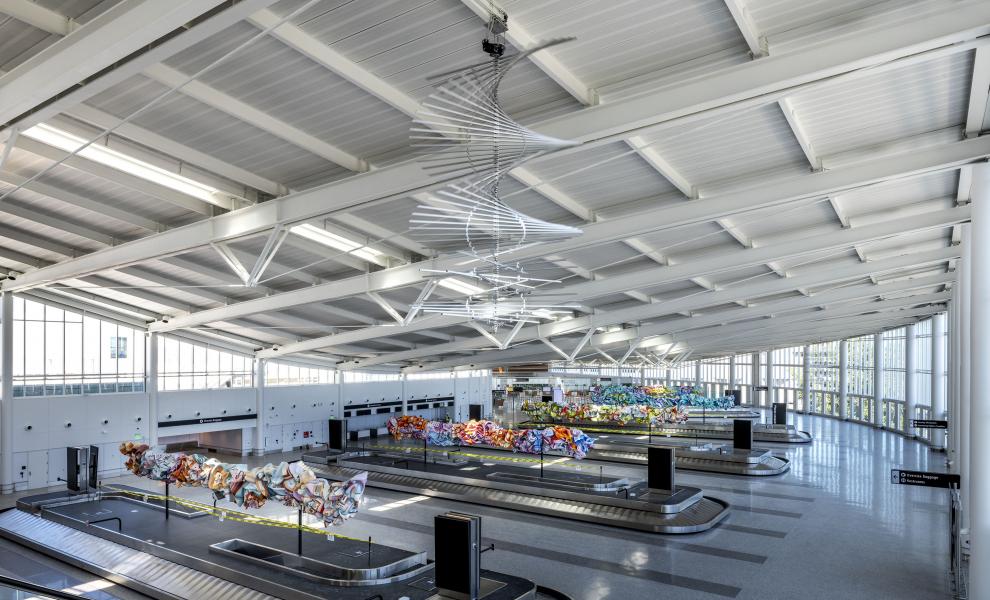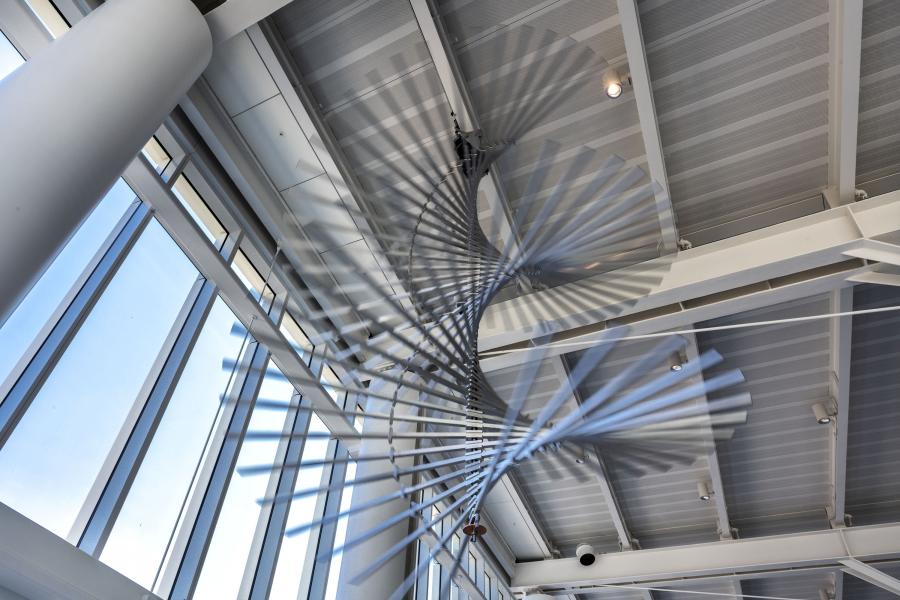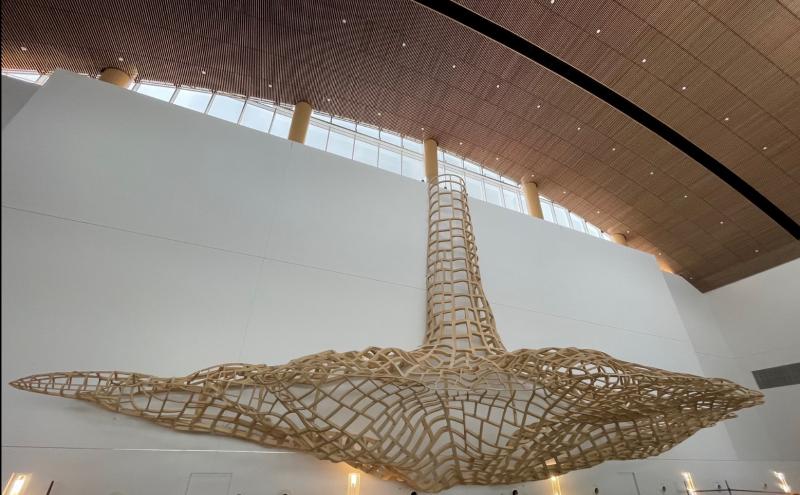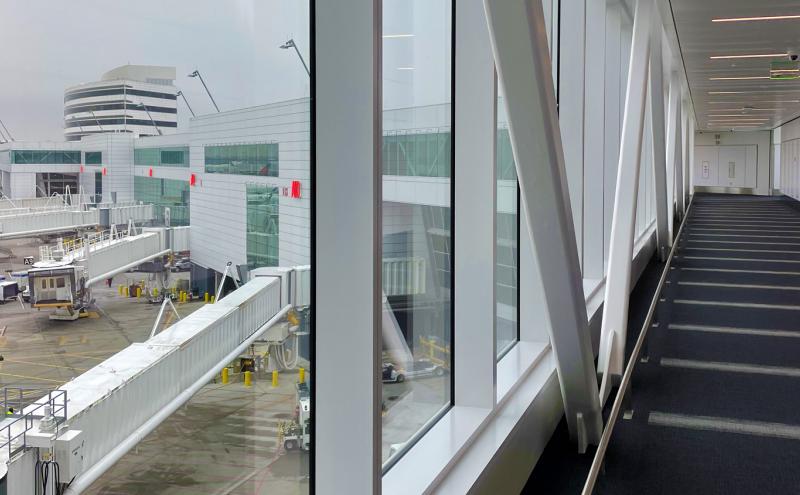
Updated February 2022
Seattle-Tacoma International Airport (SEA) is working to create a Pacific Northwest sense of place at the airport. That vision is coming to life in the new International Arrivals Facilities (IAF) — opening spring of 2022 — where we want you to feel "welcome here, welcome home."
Earlier this year, Chalchiutlicue, a series of five monumental painted sculptures by contemporary visual artist Marela Zacarías, was installed at the IAF. Suspended from steel beams above five baggage carousels, the artwork echoes the natural beauty of the Pacific Northwest through its colors and shapes. Recently, Magnetic Anomaly, created by the California-based artist Ned Kahn joined the new facility with three custom metal fabrications, consists of spinning suspended metallic mobiles that are inspired by the wind. As you enter the Grand Hall of the IAF, both pieces of art pay homage to the outdoors and welcome you to SEA and the greater Pacific Northwest.

Is it art or science?
Magnetic Anomaly encompasses three kinetic sculptures of different lengths staggered throughout the IAF that will move with you through the facility, whether SEA is your final destination or you’re connecting to the next leg of journey. Kahn is an environmental artist and sculptor whose work makes natural forces visible by using elements such as water, wind, fire, and sand. That expertise is intertwined with each sculpture of Magnetic Anomaly where Kahn uses a motor to slowly move one of the 12-foot aluminum square tubes — called ribs — attached to the cam between 3 and 4 rpms.
Magnets placed on the ribs repel each other, creating motion and bringing the sculpture to life. Magnets are composed of two poles and can either attract or repel each other. With his three sculptures, Kahn placed the magnets facing the same way. The magnetic repulsion allows the sculptures to spin without having the magnets touching one another. The anomaly occurs when, after about one minute and 30 seconds, the first rib starts spinning in the other direction. Disrupting the motion of his sculptures, the artist creates a controlled chaos that will surprise you.

Kahn explains, “The confluence of science and art has fascinated me throughout my career. For the last 20 years, I have developed a body of work inspired by atmospheric physics, geology, astronomy, and fluid motion. I strive to create artwork that enable viewers to observe and interact with natural processes. I am less interested in creating an alternative reality than I am in capturing, through my art, the mysteriousness of the world around us.”
To install his sculptures, Kahn worked with Seattle-based art handling company, ArtSite Ltd. In 1982, Kahn received his B.A. in Environmental Studies from the University of Connecticut.











